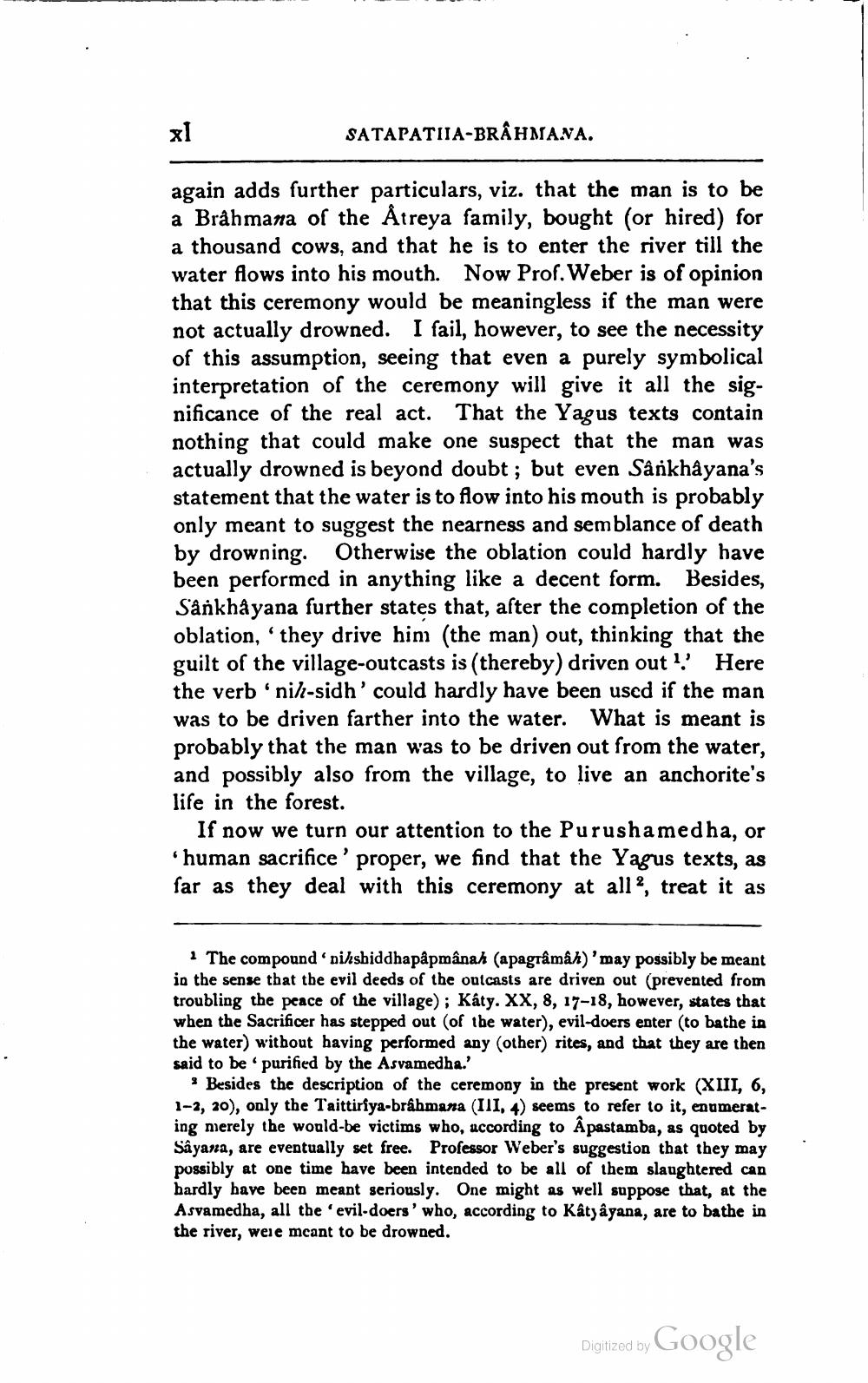________________
SATAPATIIA-BRAHMANA.
again adds further particulars, viz. that the man is to be a Brâhmana of the Atreya family, bought (or hired) for a thousand cows, and that he is to enter the river till the water flows into his mouth. Now Prof. Weber is of opinion that this ceremony would be meaningless if the man were not actually drowned. I fail, however, to see the necessity of this assumption, seeing that even a purely symbolical interpretation of the ceremony will give it all the significance of the real act. That the Yagus texts contain nothing that could make one suspect that the man was actually drowned is beyond doubt ; but even Sârikhayana's statement that the water is to flow into his mouth is probably only meant to suggest the nearness and semblance of death by drowning. Otherwise the oblation could hardly have been performed in anything like a decent form. Besides,
Sânkhåyana further states that, after the completion of the oblation, 'they drive him (the man) out, thinking that the guilt of the village-outcasts is (thereby) driven out 1' Here the verb.nih-sidh'could hardly have been used if the man was to be driven farther into the water. What is meant is probably that the man was to be driven out from the water and possibly also from the village, to live an anchorite's life in the forest.
If now we turn our attention to the Purushamedha, or "human sacrifice' proper, we find that the Yagus texts, as far as they deal with this ceremony at all?, treat it as
1 The compound nihshiddhapåpmânah (apagrâmâh)'may possibly be meant in the sense that the evil deeds of the outcasts are driven out (prevented from troubling the peace of the village); Káty. XX, 8, 17-18, however, states that when the Sacrificer has stepped out (of the water), evil-doers enter (to bathe in the water) without having performed any other) rites, and that they are then said to be purified by the Asvamedha.
* Besides the description of the ceremony in the present work (XIII, 6, 1-2, 20), only the Taittiriya-brahmana (III, 4) seems to refer to it, enumerating merely the would-be victims who, according to A pastamba, as quoted by Sâyana, are eventually set free. Professor Weber's suggestion that they may possibly at one time have been intended to be all of them slaughtered can hardly have been meant seriously. One might as well suppose that, at the Asvamedha, all the evil-doers' who, according to Kâtyâyana, are to bathe in the river, were meant to be drowned.
One mich all of the
vil-doers.
Digitized by Google




